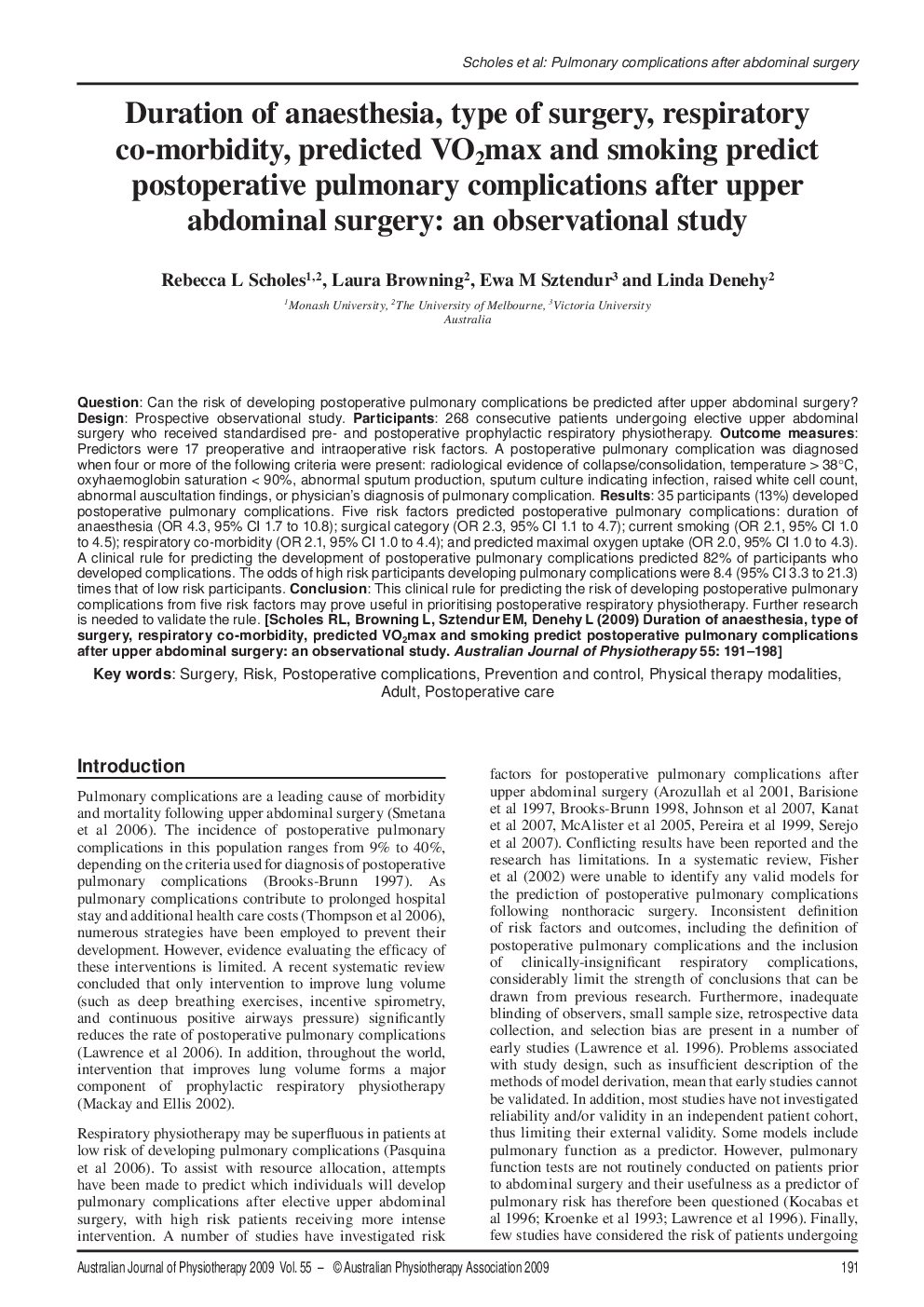| Article ID | Journal | Published Year | Pages | File Type |
|---|---|---|---|---|
| 2700906 | Australian Journal of Physiotherapy | 2009 | 8 Pages |
QuestionCan the risk of developing postoperative pulmonary complications be predicted after upper abdominal surgery?DesignProspective observational study.Participants268 consecutive patients undergoing elective upper abdominal surgery who received standardised pre- and postoperative prophylactic respiratory physiotherapy.Outcome measuresPredictors were 17 preoperative and intraoperative risk factors. A postoperative pulmonary complication was diagnosed when four or more of the following criteria were present: radiological evidence of collapse/consolidation, temperature > 38°C, oxyhaemoglobin saturation < 90%, abnormal sputum production, sputum culture indicating infection, raised white cell count, abnormal auscultation findings, or physician's diagnosis of pulmonary complication.Results35 participants (13%) developed postoperative pulmonary complications. Five risk factors predicted postoperative pulmonary complications: duration of anaesthesia (OR 4.3, 95% CI 1.7 to 10.8); surgical category (OR 2.3, 95% CI 1.1 to 4.7); current smoking (OR 2.1, 95% CI 1.0 to 4.5); respiratory co-morbidity (OR 2.1, 95% CI 1.0 to 4.4); and predicted maximal oxygen uptake (OR 2.0, 95% CI 1.0 to 4.3). A clinical rule for predicting the development of postoperative pulmonary complications predicted 82% of participants who developed complications. The odds of high risk participants developing pulmonary complications were 8.4 (95% CI 3.3 to 21.3) times that of low risk participants.ConclusionThis clinical rule for predicting the risk of developing postoperative pulmonary complications from five risk factors may prove useful in prioritising postoperative respiratory physiotherapy. Further research is needed to validate the rule.
